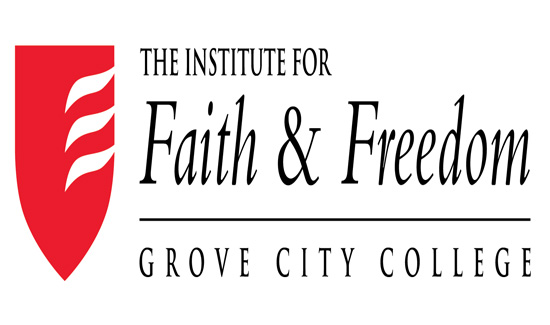Casino Revenues Continue to Climb
![]()
(December 2, 2021)–Summary: When the total gaming revenues for October were released, the news headlines proclaimed a record-breaking month with more $425 million generated. With the previous record being set just a few months earlier (July had $423.6 million in revenues), 2021 is on pace to be a record-setting year. But that may have more to do with increasing gaming options and three new mini-casinos.
____________________________________________________________________
Past Policy Briefs have documented the progress of gaming in the commonwealth since legislation was passed in 2004. The legislation guaranteed a slot license to all horse-racing tracks with a few stand-alone casinos, including one in the City of Pittsburgh. In 2009, there were nine casinos in operation, including The Rivers in Pittsburgh, and slot machine gross terminal revenues (GTR) reached $1.96 billion.
Slot machines
Statewide slot machine GTR topped out at $2.47 billion in 2012 when there were only 11 casinos in operation. The first resort casino (Valley Forge) opened in early 2012 and the second (Nemacolin) opened in 2013. From 2013 through 2019 statewide GTR averaged $2.36 billion. During the 2020 pandemic year statewide GTR fell to $1.36 billion. It has rebounded thus far in 2021 to hit $1.91 billion through October and is on pace to reach $2.29 billion—about 3 percent shy of 2019’s total.
It is important to realize that the number of slot machines in operation has been steadily increasing over the years. In 2009 the monthly average was 21,450 slot machines across the nine casinos in operation. By 2019 the monthly average came in at 24,700—a 15 percent increase. Due to social distancing in the pandemic, the number of machines in operation has fallen to about 23,000 in 2021. It is also important to note that the number of casinos has also increased to 15 as three new mini-casinos were opened in 2020-21.
The per machine GTR did not change much, rising from $7,750 in 2009 to $7,968 in 2019—an increase of only 3 percent. It has picked up a bit in 2021, rising to $8,375, in large part due to higher-than-normal play in March through May (a per machine average of $9,700) as people began returning to casinos after a long absence. The average per machine play in August through October was more in line with the 2019 figure ($7,900).
This is important because slot machine revenues were touted as the reason for legalizing gaming in Pennsylvania—GTR are taxed at rate of 54 percent with 34 percent going toward school property tax relief. The remaining 20 percent is divided between economic development, the local share assessment and the racehorse development fund.
With stagnant GTR and rising property tax bills, substantial relief from gaming is no longer possible.
Table games
Table games were introduced in 2010, just a couple years after the debut of slot machines. Gross revenues from table games do not go into the property tax relief fund. They are taxed at 14 percent with 12 percent going to the state’s general fund.
In 2011, the first full year of table games, statewide gross revenues came in around $620 million. They grew steadily over the next few years until reaching $903.5 million in 2019. The pandemic caused those revenues to drop to $504.3 million. In 2021, statewide revenues have reached $758.6 million, through October, and are on pace to reach a record $910.3 million—just topping the amount in 2019.
The number of table games available increased over the years. In 2011 there was an average of 900 tables per month spread across 11 casinos which grew to 1,276 by 2019—an increase of 42 percent. In 2021 it is over 1,370 tables across 15 casinos in the commonwealth. On a per-table basis, the average in 2011 came in at $57,392 and reached a peak in 2017 at $59,737. The 2021 average thus far is $55,265—7.5 percent less than the peak and 3.7 percent lower than in 2011.
As the number of table games has expanded, the play per table has declined, implying that the amount of money being spent by gamblers at table games seems to be spread even thinner as the number of casinos, and table games, across the state increases.
Other forms of gaming
When Pennsylvania passed gaming legislation in 2004 only neighboring New Jersey, West Virginia and some Native American properties in New York had legalized gaming. Upon Pennsylvania passing slots legislation, West Virginia countered with legalizing table games to which Pennsylvania countered with table games legislation of its own. Ohio and Maryland also legalized gaming in their states, both slots and tables, while New Jersey passed an internet gaming law. A gaming arms race was underway.
Pennsylvania countered New Jersey with an internet gaming law of its own and also legalized fantasy sports contests, video gaming terminals at truck stops and sports wagering (Policy Brief Vol. 20, No. 7).
While casino-based slot machines still hold the lead in total revenue generated ($203.3 million of $425.9 million), in October it accounted for 48 percent of total gaming revenue. However, this is likely to fall as internet gaming increases in popularity. There are three internet gaming options: slots, tables and poker. Internet gaming in Pennsylvania can only be done by those physically within Pennsylvania’s borders with casinos located in the commonwealth.
Internet slot gaming is taxed at the same as the physical slot machines (54 percent) but the allocation is different. Instead of 34 percent going to the property tax relief fund, only 65 percent of that 34 percent is given to the property tax relief fund. The remainder goes to the general fund. In October, total revenue from internet slot play was the third-highest total behind physical slot machines and table games. At $70.7 million it accounted for about 17 percent of all gaming revenues.
Internet table game revenues are taxed at the same rate as the physical table games and have the same allocations. They were the fourth-largest revenue generator ($29.3 million) and account for 7 percent of all gaming revenues. Internet poker rounds out the three at $2.9 million and is just under 1 percent of all gaming revenues in October.
In total, internet gaming accounts for over 24 percent of total gaming revenues and tops physical table games ($89.1 million or 21 percent of the total) as the second-leading form of gaming in Pennsylvania. Its popularity may only be increasing due to its convenience. It will be worth tracking going forward. But, more importantly, it will be interesting to track the amount of money it contributes to the school property tax relief fund, the originally stated primary reason we have gaming in Pennsylvania.
Conclusion
Another reason gaming legislation passed was to keep Pennsylvanians from taking their disposable income across state lines to gamble and to entice those from other states to gamble here. As nearly all bordering states having gaming, the percentage of out-of-state gamblers has undoubtedly fallen since the first casinos opened in Pennsylvania in 2006. Most of the gaming revenue comes from Pennsylvanians.
And that is the most concerning part. As gaming options have increased, they have drawn more Pennsylvanians’ disposable income away from other entertainment options such as movies, theaters, etc. It also offers another gaming alternative to the state Lottery where the proceeds benefit senior citizen programs.
Pennsylvania should not be looking to the gaming industry to sustain its economy or fill tax coffers. The expansion of gaming options has brought gambling to a wider swath of Pennsylvanians and the social consequences have yet to be fully understood.
Frank Gamrat, Ph.D., Executive Director
If you wish to support our efforts please consider becoming a donor to the Allegheny Institute.The Allegheny Institute is a 501(c)(3) non-profit organization and all contributions are tax deductible.Please mail your contribution to:
The Allegheny Institute
305 Mt. Lebanon Boulevard
Suite 208
Pittsburgh, PA15234
For more on this topic click here




